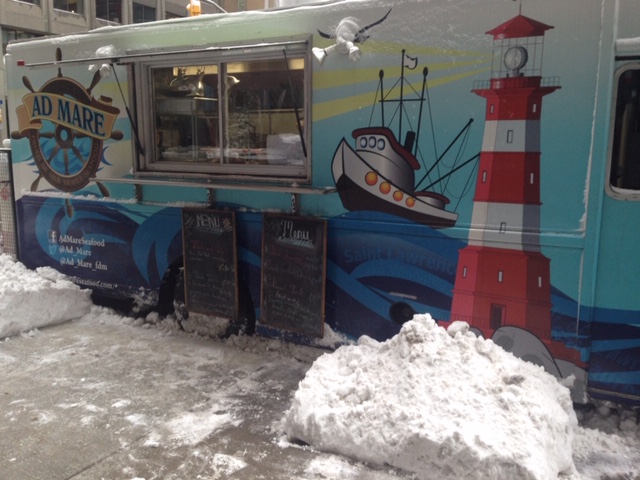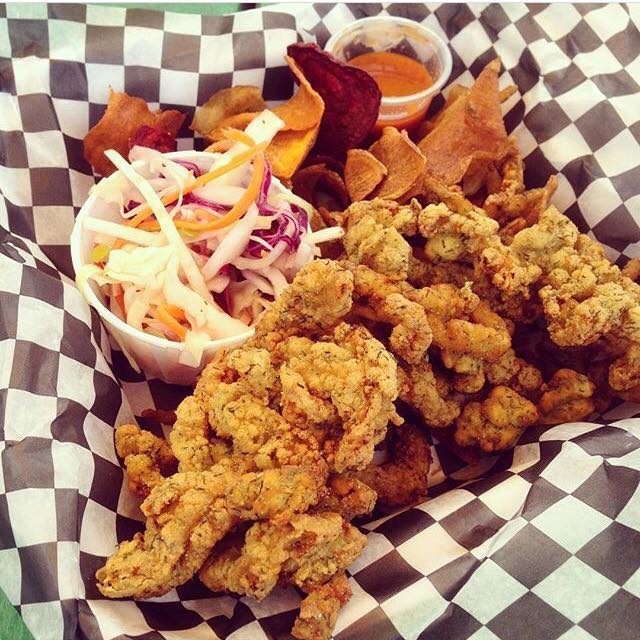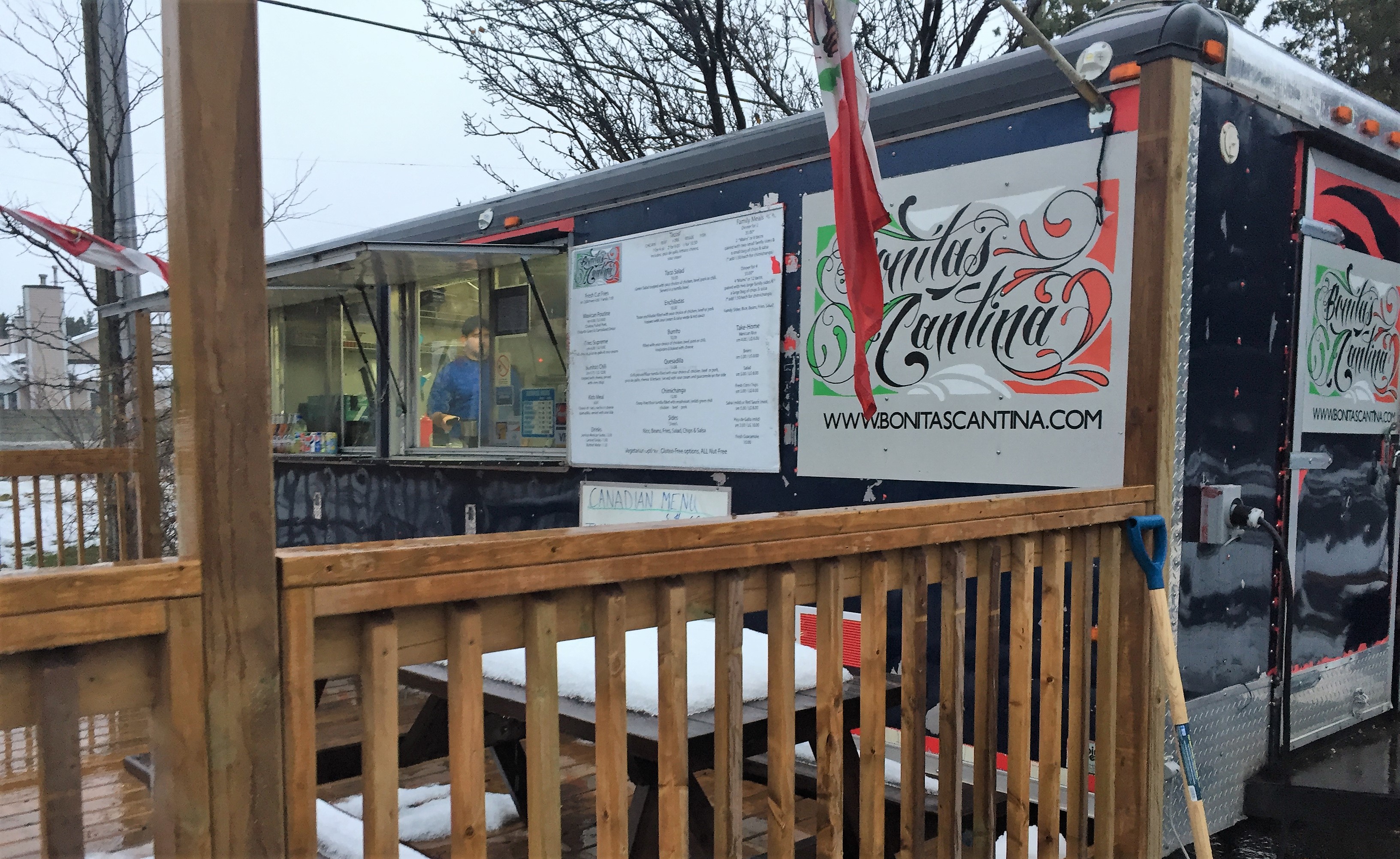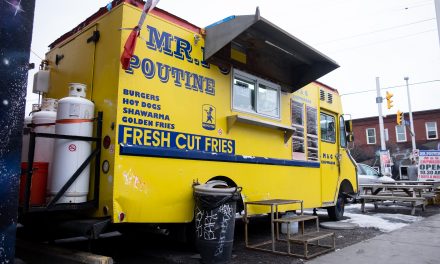Photo by: m.c.phoo.
Every morning, Mario Burke gets on his seafood truck, the Ad Mare, at 6 a.m. and sails to the fishmonger to purchase fresh seafood. He creates a menu of no more than five items, ensuring his customers’ favourite meals are always on the menu: fish and chips, and fish tacos. Despite the wave of food trucks closing for the winter season, the Ad Mare drops anchor downtown every day, at the corner of Slater and O’Connor, where Burke waits from 11 a.m. to 2 p.m.
Six years ago, on Canada Day, Burke opened Ottawa’s first seafood truck. Today, he proudly drives down the city streets displaying the nation’s motto, a
For Burke, working in a mobile refrigerator has its perks. While many food trucks take a break during the Ottawa winter, Burke thrives on below-zero temperatures. The cold naturally maintains the freshness of his salmon, shrimp and clams.
“It’s like working in a fridge,”
Burke says about how the outside temperature becomes the truck’s ambient temperature.

Ad Mare docked in the snowbanks. Photo by: Mario Burke
WINTER RULES
Cooling temperatures prompt Burke’s creativity, forcing him to adjust his cooking habits to function efficiently during winter.
Fish can remain on the preparation table at below 0 C temperatures; however, the condiments and vegetables that stay out in the summer go into the refrigerator to keep them from freezing. The vinegar, potatoes, and beets must stay at temperatures between 1 C and 3 C.
“I will keep all my vegetables in the fridge at all times because that’s kind of my warmer,” Burke says. “It’s three degrees in the fridge and it’s warmer than outside.”
Shellfish and lobster need to be prepared rapidly when taken out of the boiling water, otherwise taking the meat out of the shell can be nearly impossible in the cold temperatures.
When using a knife, Burke watches his fingers carefully to avoid cutting himself. Spending hours in the cold can cause him to lose sensation in his fingertips, which can make him a bit clumsy.
Despite the issues that the temperature can bring, the secret to a successful food truck during winter is maintenance, says Burke. Every night, he plugs a block heater into the truck to keep the engine warm. He also carries a small propane-fueled torch to melt the ice that forms on windowsills and side panels.
“It’s feasible. You just get dressed. Five layers of clothes in the truck,” he explains.
The only circumstances keeping him from getting on his truck in the morning are extreme temperatures. If it is -20 C or below outside, the Ad Mare stays docked.

Ad Mare serves up warm seafood in cold winter days. Photo by: Mario Burke
In more normal winter weather, customers come to the truck to order their meals, retreat into nearby buildings from which they keep an eye on their meal’s progress. When their lunches are ready, Burke waves and
“They’re not waiting outside and freezing,” he says.
Every day, even during winter, the Ad Mare sells out, Burke explains.
Burke considers himself fortunate to operate his truck despite
“Well, I’ve been lucky,” he says, reminiscing his years of work.
MOBILE VERSUS STATIONARY
Not every food truck thrives during the Ottawa winter. As opposed to mobile trucks owners, who are able to diversify their sources of income by chasing demand, stationary truck owners are limited to walk-in customers.
AUDIO: Burke explains the difference between managing a mobile truck and managing a stationary truck.

Photo by: Gerlie Ormelet
Bonita’s Cantina, which operates from March through December, is a stationary food truck that’s preparing to close for the winter season in Stittsville. Its frozen Mexican flags wave in the cold wind while its outdoor tables are covered with coats of snow.
“For some reason, people kind of equate food trucks to a summertime thing with being outside, enjoying the weather,” said Cole Homewood, co-owner of Bonita’s Cantina. “So, once the weather gets pretty bad, a lot of people just stop coming.”
The lack of customers willing to brave the weather for tacos and quesadillas is not the only challenge Bonita’s Cantina faces. Although the truck is well heated during the day, when temperatures drop at night, frozen water pipes render the kitchen inoperable and so they close entirely each year for the deep winter..
“We can run a little bit of heat at night but the heaters can only do so much,” says Ryan Zurkowsky, Homewood’s fellow co-owner.
AUDIO: Ryan Zurkowsky explains how a stationary food truck can operate during winter.




